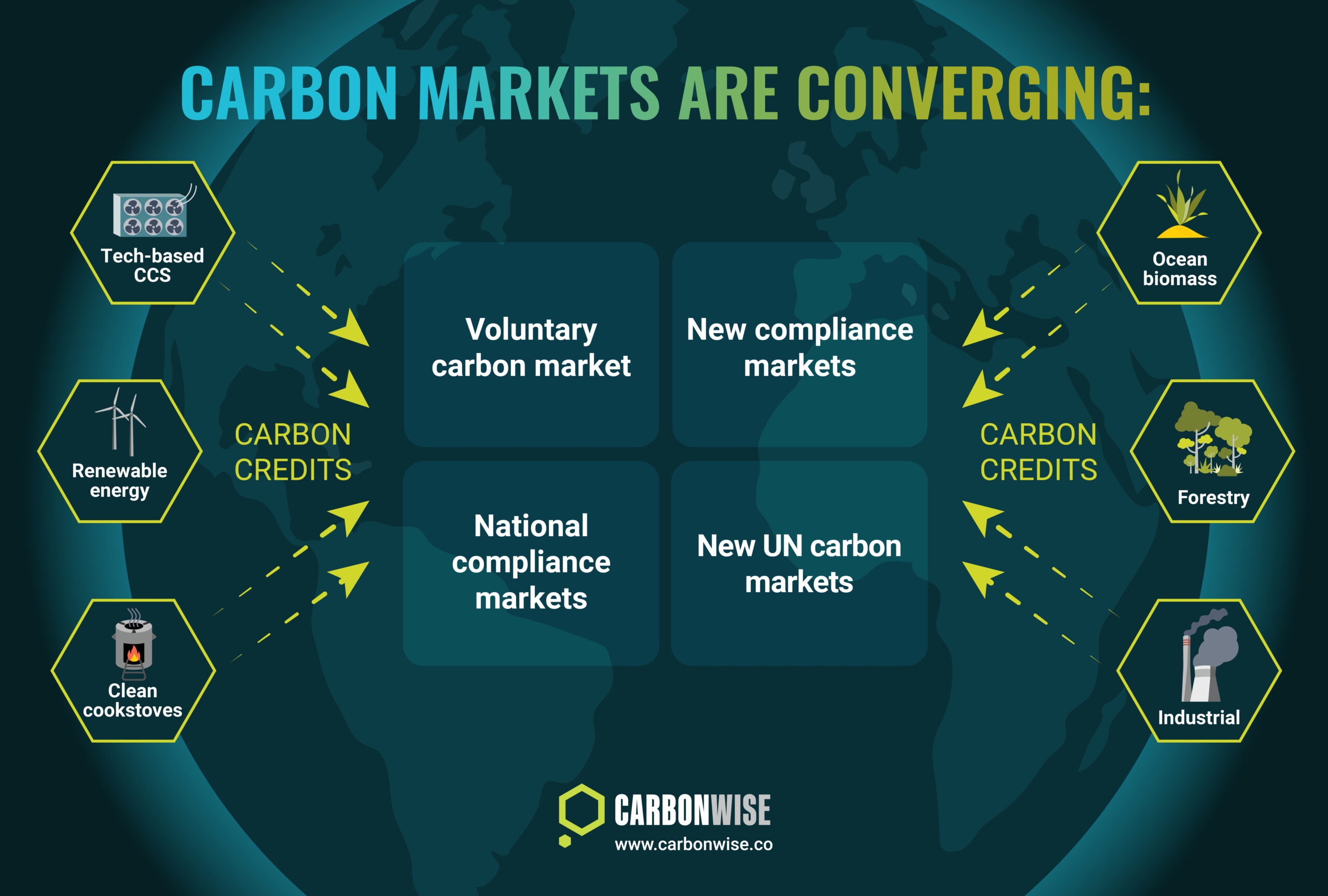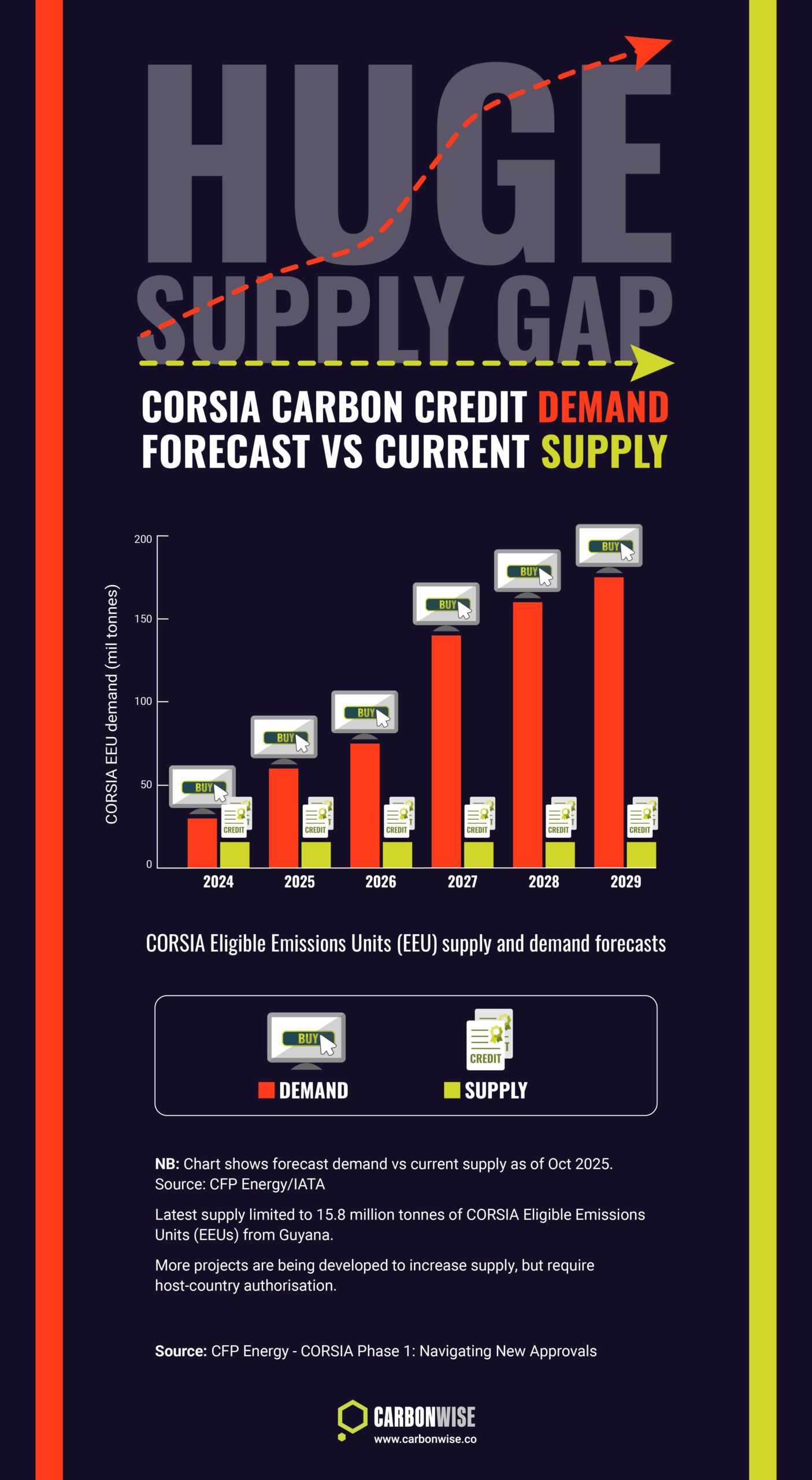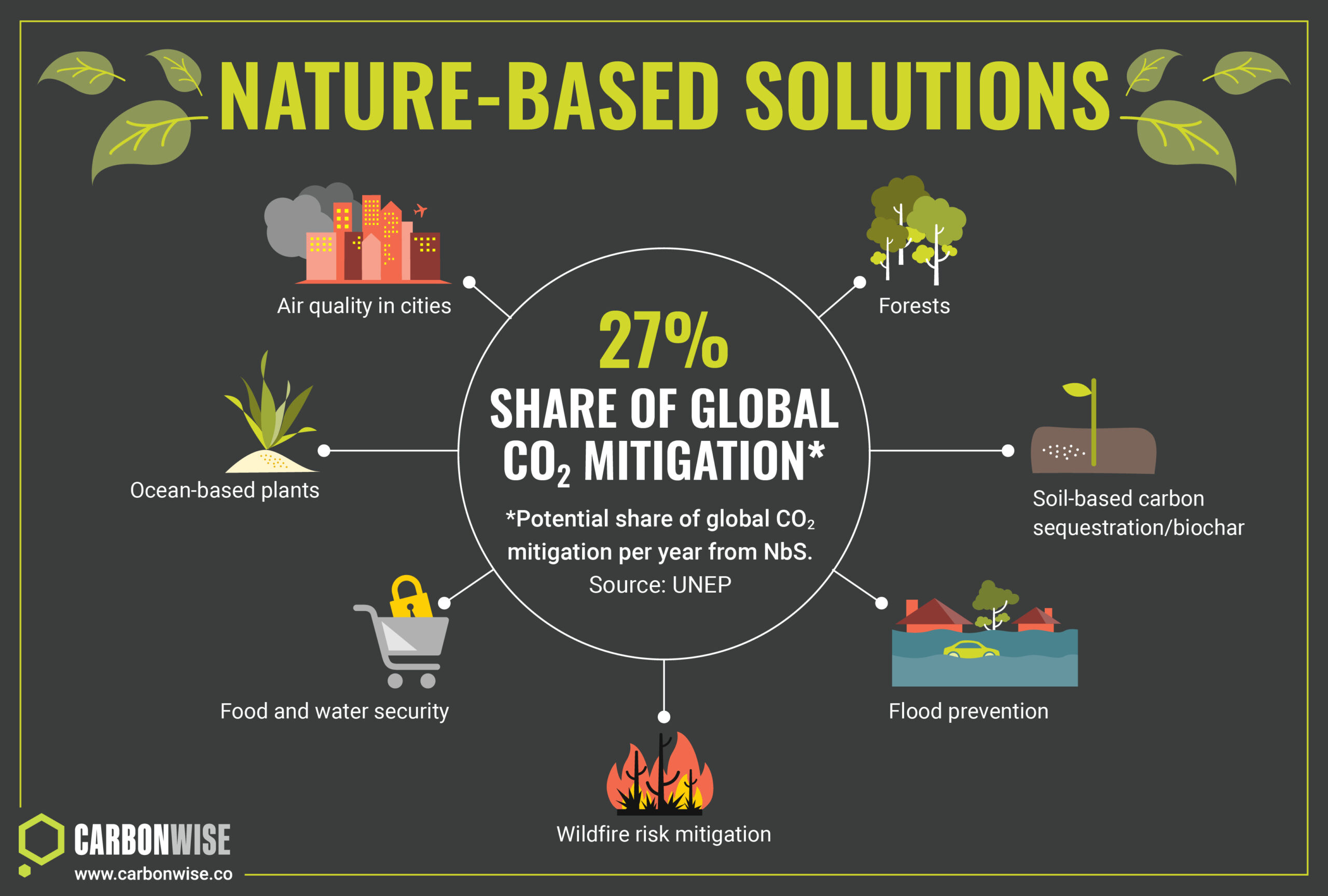Two distinct types of carbon market are converging worldwide, with implications for market participants, investors and other stakeholders alike.
Until relatively recently, carbon markets tended to come under one of two broad categories: compliance markets and the voluntary carbon market (VCM).
Compliance carbon markets, also known as “cap-and-trade” systems or emissions trading systems (ETSs), are legally binding, involve top-down regulation by governments and involve the use of carbon allowances.
Meanwhile the voluntary carbon market is a separate entity. It emerged from the ground up, lacks governmental oversight and allows organisations to invest in and retire project-based carbon credits to demonstrate sustainability efforts – an activity usually described as “carbon offsetting.”
While some of the compliance markets also allow the use of project-based credits up to certain limits, these two types of carbon market have remained largely separate.
Markets converging
But that’s beginning to change as the two types of market have begun to converge, and this process is accelerating. This has implications for how carbon markets develop as well as climate action more broadly.
Several compliance carbon markets are in the process of opening up to the use of project-based carbon credits, perhaps most exemplified by the new markets emerging under the Paris Agreement’s Article 6.
This has two potential impacts, both of which matter for companies involved in carbon markets.
The first is that companies regulated under carbon compliance markets may find that they have greater flexibility in how they meet their obligations to surrender allowances each year, as carbon credits offer a potentially more cost-effective option than buying allowances, reducing compliance costs.
The second impact is arguably more important and far-reaching: the market for project-based carbon credits is beginning to see new sources of demand open up from the compliance markets that could increase interest, bringing higher prices for carbon credits and greater investment flows than have been seen so far.
Which compliance markets allow project-based carbon credits?
One of the most high-profile carbon compliance markets is the EU Emissions Trading System. The EU ETS previously allowed project-based carbon credits into the system within certain limits – for example Certified Emission Reductions (CERs) from the UN’s Clean Development Mechanism and Emission Reduction Units (ERUs) from the Joint Implementation program. But this eligibility of credits in the EU ETS was phased out as of 2020.
This all looks set to change as the European Commission in 2025 proposed amendments to its 2040 climate law that would allow the use of credits from high-quality carbon removal projects in the EU ETS. If adopted, the amendment will send a signal for companies to start developing carbon removal projects across Europe.
In a similar manner, the UK Emissions Trading System does not allow carbon credits for compliance, but the government is considering allowing the use of high-quality greenhouse gas removal credits in future. These come from projects that remove CO2 or other gases from the atmosphere, such as forests, or technology-based carbon capture facilities.
Other compliance carbon markets that already allow the use of project-based credits include the California Cap-and-Trade Program, the US Regional Greenhouse Gas Initiative (RGGI), the South Korea Emissions Trading System (K-ETS), the New Zealand Emissions Trading Scheme (NZ ETS) and some national carbon tax systems like those in South Africa, Singapore and others.
New markets emerge
More recently, new and distinct carbon markets have been developed that are legally binding, but use project-based carbon credits as their main currency rather than carbon allowances.
A notable example is the UN International Civil Aviation Organisation’s Carbon Offsetting and Reduction Scheme for International Aviation (CORSIA). This system requires airline operators to purchase and surrender carbon credits every year from certain eligible projects to match any CO2 emissions growth above a 2019 baseline. As the sector’s emissions rebound from COVID-related lows in 2020, this has started to create additional demand for eligible carbon credits worldwide.
A global carbon market under the UN
Further carbon markets are on the horizon that are likely to create even more significant demand for project-based credits.
For example, more than 190 countries are signatories to the Paris Agreement, and this means they are bound to set targets to reduce GHG emissions, known as Nationally Determined Contributions (NDCs). These goals will be reviewed every five years, meaning the targets will become more ambitious over time.
In order to meet those targets, many governments will implement GHG reduction projects which generate carbon credits that can be sold to other governments or companies in other countries. As these targets deepen, these markets under the UN are likely to create more demand for credits that are currently being absorbed by companies in the voluntary carbon market, which could squeeze the supply of credits.
Increased financial flows and price divergence
In general, carbon allowances in the regulated carbon compliance markets have seen higher prices, compared with project-based carbon credits, and this is chiefly because under regulated markets the supply of allowances is fixed and falls over time. These tight controls on supply tend to generate a relative scarcity, and as companies compete to acquire allowances from a shrinking pool, their price tends to rise, encouraging renewed efforts to cut emissions.
In contrast, carbon credits from climate projects have tended to trade at much lower prices (with some exceptions), mostly because there is no ‘cap’ on total supply: project developers can continue creating new projects, which add to the global supply of credits.
But as this largely binary world of carbon markets begins to change, it carries implications for the market’s supply and demand dynamics. Allowing the use of project-based credits in the compliance markets is likely to drive additional demand, potentially pushing carbon credit prices higher in future, and in particular for the project types that are deemed eligible in those markets.
In addition, many governments – especially those that are concerned about their ability to achieve their NDCs – may see a strong reason to use carbon credits from domestic projects to meet their own national target, rather than seeing a valuable national resource exit the country for use by third parties.
Therefore, governments could become more guarded in their dealings with carbon projects, and take on a more proactive role in regulating activities in the market for project-based credits. This could have the effect of improving the quality of projects, but also limiting the cross-border availability of carbon credits just as new markets emerge that increase demand, putting a squeeze on the market.
A convergence between carbon credits and the compliance carbon markets could help to harness the innovative nature of the voluntary carbon market as well as the more stringent environmental integrity and regulatory rigour associated with the legally binding markets.
Outlook for carbon markets
What we are likely to see is a continuation of carbon credits flowing from climate projects to companies for corporate sustainability reasons, but also an increased ‘pull’ on these credits from projects that are deemed eligible for use in a growing number of carbon compliance markets worldwide, including the emerging markets under the UN.
This convergence of markets is likely to strengthen the links between project-based credits and the legally binding carbon markets that continue to proliferate, as well as increasing the flow of finance into climate projects worldwide.
In a sense, this could also finally provide the top-down regulation of environmental quality in carbon projects that has been absent so far, as governments bring the regulatory rigour from compliance markets to the world of project-based credits. This use of more stringent eligibility requirements for a sub-set of projects is also likely to have implications for how the market values these credits.






